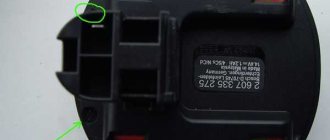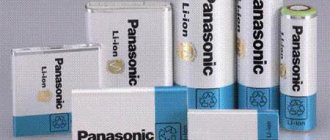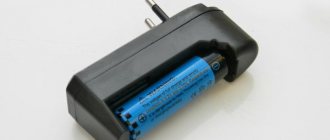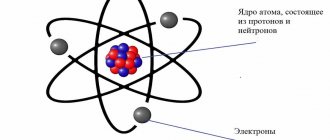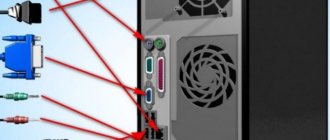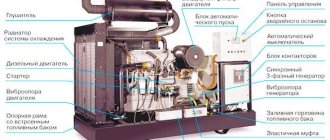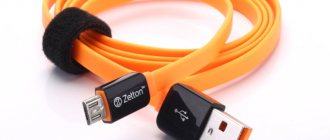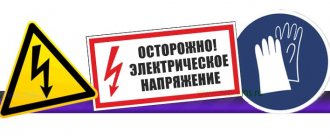It is difficult to find an area where there are no devices running on electrical energy. Mobile sources include rechargeable batteries and disposable batteries that power the consumer by converting chemical energy into electrical energy. Lithium-ion batteries are electron pairs with active components containing lithium salts. The shape of the battery resembles a disposable AA battery, but is slightly larger, has hundreds of charging cycles, and belongs to Li-ion 18650 batteries.
Li-ion battery 18650 device
The production of lithium-ion batteries is based on the sites of Sanyo, Sony, Panasonic, LG Chem, Samsung SDI, Skme, Moli, BAK, Lishen, ATL, HYB . Other companies buy elements, repackage them, passing them off as their own products. They also write false information about the product on the shrink film. There are currently no 18650 Li-ion batteries with a capacity higher than 3600 mAh.
The main difference between rechargeable batteries and batteries is the possibility of repeated recharging. All batteries are designed for a voltage of 1.5 V, the product has a li-ion output of 3.7 V. Form factor 18650 means a lithium battery 65 mm long, 18 mm in diameter.
18650 lithium battery operating mode characteristics:
- The maximum voltage is 4.2 V, and even minor overcharging significantly reduces the service life.
- The minimum voltage is 2.75 V. When reaching 2.5 V, special conditions for capacity restoration are required. When the voltage at the terminals is 2.0 V, the charge is not restored.
- The minimum operating temperature is -20 0 C. Charging at sub-zero temperatures is not possible.
- Maximum temperature +60 0 C. At higher temperatures, an explosion or fire can be expected.
- Capacity is measured in Amps/Hours. A fully charged 1Ah battery can supply 1A of current for an hour, 2A for 30 minutes, or 15A for 4 minutes.
Weight difference
It is no secret that lead batteries weigh more than lithium-ion batteries, but this is often not given importance, prioritizing the cost advantage. However, for an e-bike, the low weight may be more important than the price, since you will be carrying it up and down stairs (perhaps even every day), and sometimes loading it into a car for transport.
In addition, the additional weight does not have the best effect on the dynamics of acceleration and braking. More weight means higher inertia and more wear on the brake pads. Also, the use of heavy lead batteries increases the load on the frame and suspension system of the bicycle.
Consider, for example, a 36 V battery with a capacity of 7-7.5 Ah. The lead-acid version consists of three 12 V 7Ah batteries connected in series, and the lithium-ion version consists of 30 18650 2500 mAh cells and a BMS board, weighing about 100 grams.
| Battery type | Lead acid | Lithium-ion |
| Item characteristics | 7 Ah 12V 2.3 kg | 2.5 Ah 3.6 V 0.05 kg |
| Assembly diagram | 3S1P (3 elements) | 10S3P (30 elements) |
| Battery Specifications | 7 Ah 36 V | 7.5 Ah 36 V |
| Control board | Not required | BMS 10S 0.1 kg |
| Finished battery weight (without housing) | 6.9 kg | 1.6 kg |
The table shows that the weight of a lead battery exceeds the weight of a lithium-ion battery by more than 4 times, and this difference will affect the performance characteristics of the bicycle, including the power reserve on a single charge.
It is also worth considering that if you forgot to charge the battery before the trip, returning to the pedals with lead on board will be much harder.
Charge controller for li-ion battery 18650
Major manufacturers produce standard 18650 lithium batteries without a protective board. This controller, made in the form of an electronic circuit, is installed on top of the case, lengthening it somewhat. The board is located in front of the negative terminal and protects the battery from short circuits, overcharging, and overdischarging. Defense is being assembled in China. There are devices of good quality, but there are outright scams - unreliable information, capacity 9,000A/h. After installing the protection, the case is placed in shrink film with inscriptions. Due to the additional design, the case becomes longer and thicker, and may not fit into the intended slot. Its standard size can be 18700, and can be increased due to additional actions. If the 18650 battery is used to create a 12V battery that has a common charge controller, breakers on the individual Li-ion cells are not needed.
The purpose of protection is to ensure the operation of the energy source within the specified parameters. When charging with a simple charger, the protection will not allow overcharging and will turn off the power in time if the 18650 lithium battery runs down to a voltage of 2.7 V.
Marking of lithium batteries 18650
There are markings on the surface of the battery case. Here you can find complete information about the technical properties. In addition to the manufacturing date, expiration date and manufacturer's brand, the device of 18650 lithium batteries and the consumer qualities associated with this aspect are encrypted.
- ICR – lithium-cobalt cathode. The battery has a high capacity, but is designed for low current consumption. Used in laptops, video cameras and similar long-lasting equipment with low energy consumption.
- IMR – lithium manganese cathode. It has the ability to produce high currents and can withstand discharge up to 2.5 a/h.
- INR – nickelate cathode. Provides high currents, withstands discharge up to 2.5 V.
- NCR is a specific marking of Panasonic. The properties of the battery are identical to the IMR. Nickelates, cobalt salts, and aluminum oxide are used.
Positions 2,3,4 are called “high-current”, they are used for flashlights, binoculars, and cameras.
Lithium ferrophosphate batteries have the ability to operate at deep minus temperatures and are restored during deep discharge. Undervalued on the market.
By the marking you can determine whether this is a rechargeable lithium battery with the letters I R. If there are letters C/M/F, the cathode material is known. The capacity indicated will be mA/h. The release date and expiration date are located in different places.
You should know that manufacturers of rechargeable lithium batteries do not have products with a capacity of more than 3,600 mAh. In order to repair a laptop battery or assemble a new one, you need to purchase batteries without protection. To use a single copy, you need to buy elements with protection.
High current batteries
Lithium-manganese batteries are capable of delivering a more powerful current load; their current output reaches 7C. The main disadvantage of such lithium-ion cells is their lower capacity.
High current batteries have a lower capacity.
How to distinguish high current 18650 batteries from regular ones
You can determine the composition of each specific 18650 battery by paying attention to the manufacturer's labeling. The presence of manganese in the components of the element will indicate its ability to transmit high current, and therefore lower capacity.
Important! Manufacturers, at their discretion, can change the abbreviation of designations on the product body, and therefore it is better to pay attention to the digital characteristics.
Criteria for distinction
To understand how to distinguish high-current 18650 batteries from regular ones, you should pay attention to the load indicated on the case; more than 10 amperes - this means we are dealing with a high-current product. The capacity will be indicated quite low; for different manufacturers it can range from 1500 to 2600 mAh. In this case, the internal voltage will also be low. Conventional batteries weigh less.
Attention! Chargers for high-current batteries must have a current of up to 3 A.
How to test a 18650 lithium battery
If, when buying an expensive device, you doubt the veracity of the information on the case, there are ways to check. In addition to special meters, you can use improvised means.
- You have a charger, you can time the time of full charging with a certain current strength. The product of time and current will reveal the approximate capacity of the li-ion battery.
- A smart charger will help you. It will show both voltage and capacity, but the device is expensive.
- Connect the flashlight, measure the current, and wait for the light to go out. The product of time and current gives the current capacity in A/h.
You can determine the power of a battery by weight: a 18650 lithium battery with a capacity of 2000 mAh should weigh 40 g. The higher the capacity, the greater the weight. But the defectors have learned to add sand to the body to make it heavier.
Li-ion battery charging indicator
Follow these steps to keep your battery healthy.
What you need to do: Charge the battery as needed. Don't worry about running out completely, as partial and occasional charging is better for the health and longevity of your battery. For your own safety and the health of your battery, use only a designated charger. Store in a cool, dry place (25°C or below). Charge at room temperature 25°C. Never charge at temperatures below 0°C or above 40°C.
Taking into account the amount of energy stored in lithium ion batteries and the nature of their chemical composition, etc., it is necessary to ensure that the batteries are charged properly and with the appropriate charger and equipment.
Charger for 18650 lithium batteries
Lithium batteries are demanding on terminal voltage parameters. The maximum voltage is 4.2 V, the minimum is 2.7 V. Therefore, the charger works as a voltage stabilizer, creating 5 V at the output.
The determining indicators are the charging current and the number of elements in the battery, which you set yourself. Each element (jar) must receive a full charge. Power is distributed using a balancer circuit for 18650 lithium batteries. The balancer can be built-in or manually controlled. Good memory is expensive. Anyone who understands electrical circuits and knows how to solder can make a charger for li-ion with their own hands.
The proposed do-it-yourself charger circuit for 18650 lithium batteries is simple and will turn off the consumer after charging on its own. The cost of components is about 4 dollars, not a shortage. The device is reliable, will not overheat and will not catch fire.
Charger circuit for lithium 18650 batteries
In a homemade charger, the current in the circuit is regulated by resistor R4. The resistance is selected so that the initial current depends on the capacity of the 18650 lithium battery. What current should be used to charge a li-ion battery if its capacity is 2,000 mAh? 0.5 - 1.0 C will be 1-2 amperes. This is the charging current.
What current to charge a li-ion battery 18650
There is a procedure for restoring the functionality of a 18650 lithium battery after the voltage drops to working voltage. We restore capacity measured in amp hours. Therefore, first we connect the Li-ion battery form factor 18650 to the charger, then we set the charging current with our own hands. The voltage changes over time, the initial value is 0.5 V. As a stabilizer, the charger is designed for 5 V. To maintain performance, parameters of 40-80% of the capacity are considered favorable.
The charging scheme for a li-ion 18650 battery involves 2 stages. First, you need to raise the voltage at the poles to 4.2 V, then stabilize the capacitance by gradually reducing the current. The charge is considered complete if the current drops to 5-7 mA when the power is turned off. The entire charging cycle should not exceed 3 hours.
The simplest single-slot Chinese charger for li-ion 18650 batteries is designed for a charging current of 1 A. But you will have to monitor the process yourself, switch it yourself. Universal chargers are expensive, but they have a display and carry out the process independently.
How to properly charge a Li-ion 18650 battery in a laptop? Connecting a set of energy sources in the gadget via Pover Bank. The battery can be charged from the mains, but it is important to turn off the power as soon as the unit has reached capacity.
Effect of high temperatures
When used at high temperatures, the battery rapidly degrades. But what is meant by the concept of high temperature and where does it come from?
When a load is connected to the battery, for example, in the form of an electric bicycle motor, current begins to flow through it. Each battery has its own internal resistance. Accordingly, the flow of current leads to gradual heating of the battery - of course, depending on the current strength. The more powerful the load (higher the current), the faster the heating occurs.
If the load is too high for a given battery, it heats up quite quickly, and the process of accelerated degradation begins. The result of this process is a significant reduction in the battery capacity, and as a result, the need for its subsequent replacement.
For a lead battery, degradation begins when the temperature exceeds 25 degrees, for a lithium-ion battery - when it exceeds 45 degrees Celsius.
Restoring li-ion battery 18650
If the battery refuses to work, it may manifest itself as follows:
- The energy source is quickly discharged.
- The battery is dead and won't charge at all.
Any source can quickly discharge if the capacity is lost. This is precisely why overcharge and deep discharge are dangerous, from which protection is provided. But there is no escape from natural aging, when storage in a warehouse annually reduces the capacity of the cans. There are no methods of regeneration, only replacement.
What to do if the battery does not charge after a deep discharge? How to restore li-ion 18650? After the controller disconnects the battery, it still has a reserve of energy capable of delivering 2.8-2.4 V voltage at the poles. But the charger does not recognize a charge up to 3.0V; anything lower is zero. Is it possible to wake up the battery and start the chemical reaction again? What needs to be done to increase the charge of li-ion 18650 to 3.1 -3.3V? You need to use a way to “push” the battery, give it the necessary charge.
Without going into calculations, use the proposed circuit, mounting it with a 62 Ohm resistor (0.5 W). A 5V power supply is used here.
If the resistor heats up, the lithium battery is zero, which means there is a short circuit or the protection module is faulty.
How to restore a 18650 lithium battery using a universal charger? Set the charge current to 10 mA, and perform precharging as written in the instructions for the device. After raising the voltage to 3.1 V, charge in 2 stages according to the SONY scheme.
